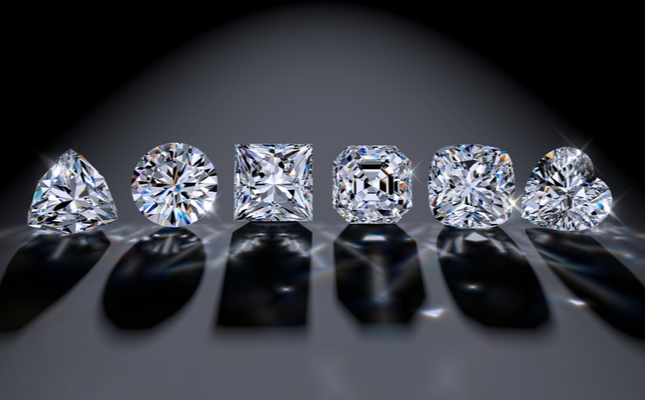Bain: Rough Diamond Sales Fall by Up to 25%
December 12, 19
(IDEX Online) - Bain & Company and the Antwerp World Diamond Centre (AWDC) have released their ninth annual global diamond study. Among the key expectations of the study is a fall in rough diamond sales by up to 25 percent in 2019. With continued geopolitical instability, strong signs of an impending recession and limited marketing support, especially for non-branded and lower-end jewelry, the situation is not expected to improve in 2020. However, it is not all bad news. According to Olya Linde, a partner with Bain & Company and lead author of the report, the branded luxury diamond jewelry segment, which accounts for about 15 percent of the total diamond jewelry market, is expected to perform well, growing at high single digits - in line with the growth of personal luxury goods. Here are some of the main findings of the report: U.S. - diamond jewelry retail sales expected to fall 2 percent versus 3 percent growth in 2018. China (Including Hong Kong) - expected to decrease by 5 percent in U.S. dollar terms compared to an increase of 4 percent in 2018 due to yuan depreciation, trade tension between the US and China and significantly lower sales in Hong Kong because of ongoing protests. India - diamond jewelry retail sales expected to increase 3 percent compared to 1 percent fall in 2018 due to increased customer confidence, growing population of working women and a shift in preference from occasion-only to everyday jewelry. Europe - performance affected by political uncertainty in the UK and social unrest in France, but partially offset by higher tourism spending in the Eurozone. Japan - expected to remain stable in 2019 because of lower consumer confidence and decreased spending by Chinese tourists. The report said that owing to the surplus created by a 26 million-carat production increase in 2017, inventory in the mining and midstream markets increased through 2019. Prices and revenues declined in both segments in 2019 despite only a slight decrease in consumer demand. Assortment sales shifted toward smaller stones in 2019, which also contributed to lower sales. In 2019, production is expected to drop an additional 4 percent. Polished diamond sales are expected to drop 10-15 percent by the end of 2019 because of slowing demand for diamond jewelry globally, lower diamond content in jewelry designs, inventory optimization by major retailers and declining available financing for midstream players According to the report, these four trends could impact the industry in the near term: Rapid growth of online sales channels Online jewelry sales stand at 5-10 percent. However, e-commerce is accelerating, and major diamond jewelry retailers in the US and China increased their online sales to 13 and 11 percent, respectively. Increased marketing spending to support the natural diamond industry In 2019, over $200 million was invested in diamond industry marketing, including $70-$80 million of generic marketing through the Diamond Producers Association. Developments in lab-grown diamonds In 2018 and 2019, production of lab-grown diamonds increased 15-20 percent, with most of the growth from China. Chinese companies primarily use high-pressure, high-temperature (HPHT) technologies to produce rough diamonds, competing on lowest production cost. In the U.S., companies are pursuing a vertically integrated business model by selling premium branded jewelry. Increased focus on the environment and sustainability Multiple industry initiatives are focused on pipeline transparency and traceability, which could increase the confidence of both lenders and consumers. Midstream operations may become more transparent and more efficiently managed as a result. "While sentiment in the rough diamond market remains cautious, having been impacted by the oversupply of polished diamonds and the challenging situation in India's financial sector, the major producers have made efforts to stabilize the diamond pipeline, reducing supply and lowering prices," says AWDC CEO Ari Epstein. "All signs now point toward the gradual reestablishment of a balance in the market in the coming year."